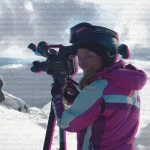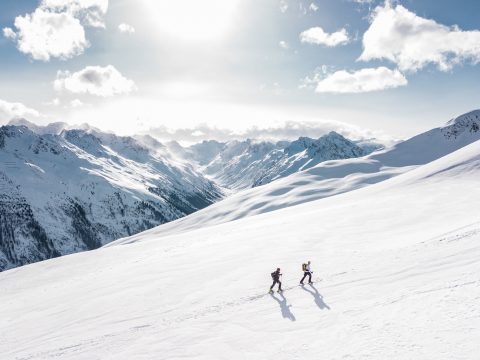
Why do so many women lose their sex drive as they get older?
5 November 2015
Climate Grief is changing the way we view our planet:
13 May 2021

Published by: Australian Geographic – Issue 157
Reading Time: 10 mins
Original source: click here
The end of snow
Could a warming climate be putting Australia’s magnificent alpine landscape at risk?
WE WAKE TO A fantasy land. In the pink hues of the early morning, snow gums glisten, frosted in snow; sunlight refracts off crystal-encrusted leaves; and kangaroos puff steamy breaths into the cold air.
In the distance, blanketed in white, Australia’s Snowy Mountains beckon. “Move your lazy butt,” shouts Jules, my cabin companion. “We’ll miss it!”
Two hours later, we’ve buckled up, clicked on, and made the fourth chair on the chairlift. We’re quickly whisked above the tree line and in no time the race is on! We’re in a mad dash against a hundred or so other skiers to ride the untouched snow as we tumble and bounce to the bottom of the slope.
That was the magic of my first ever “Aussie powder day”. It’s a bittersweet memory because as I stand here today with Professor David Karoly, a climate expert from the University of Melbourne, Dan Nicholls, an officer with the NSW National Parks and Wildlife Service (NPWS), and photographer Don Fuchs, it’s with the realisation that if we’re not careful, a warming climate may soon rob Australia of its snows.
My reason for this trip, which is part of a winter-long sojourn to Australia’s snow country, is to look at how our rapidly warming climate is affecting the alpine landscapes of New South Wales and Victoria. This morning, these thoughts are in the back of my mind as I excitedly jump on the Thredbo chairlift – the easy first stage of our assault on 2190m Rams Head, Australia’s fourth-highest mountain.

A mature snow gum bows under the weight of freshly fallen snow in Mt Hotham, Vic, as stormclouds gather overhead. (Image credit: Don Fuchs)
THE AUSTRALIAN ALPS HAVE a unique beauty. Where the peaks of Europe, New Zealand and the USA soar in sky-piercing crests, these mountains are softer, rounded. Unlike those in classic alpine regions, they weren’t formed by clashing tectonic plates. Geologists still debate their origins, but a leading theory is that some 40–20 million years ago, in the most recent phase of uplift, the Earth’s mantle swelled – like a rubber mat pushed from both ends – to raise long, rounded ridges. The resulting Victorian Alps and Snowy Mountains of NSW are the only parts of mainland Australia high enough for consistent winter snow cover.
Their apparent softness is deceptive though. As David, Dan, Don and I round a rock wall, our faces are whipped by ice pellets and the wild, rugged nature of the landscape is impossible to ignore. We’re above the tree line on Rams Head, where pearly slopes are punctuated by dramatic, time-sculpted granite tors. We’re only a hundred or so metres above Thredbo Ski Resort, but up here, in the back country, we’re in a wilder world.
You can access this back country on snowshoes but it’s slow going. Instead, we caught the T-bar to its highest point at 2037m before venturing up on skins and touring skis. As we continue to surge up the mountain, the curved peak of Mt Kosciuszko appears like a moonrise to our right and before long, we’re at the summit.
The view from Rams Head is stunning but it’s at this point I realise how fragile and vulnerable Australia’s snow country really is. We’re little more than an hour’s walk above the resort and we’ve already reached the other side of the snowscape. From here, we’re looking out over vast, green forests. In the distance, tiny islands of wafer-thin white mark the Victorian snowfields, Mt Feathertop and the Bogong High Plains.
NPWS officer Dan points to a nearby bowl of deep snow. “That area’s special,” he says. “The snow is deep enough to last until midsummer. There are species of Australian heath and herb adapted to living just there – if the snow goes, they die out.” I wonder whether these precious snow-dependent communities can survive what’s to come.
For now, we strip the skins off our skis, and in minutes we’re swooping down untouched snow into the evocatively named Enchanted Forest of snow gums below. It’s exhilarating, magical. As I curve my body in a rhythmic dance of arcing turns, I can’t help whooping aloud. This is the closest I will ever come to flying. It’s pure joy.

Sculptural granite tors and shark’s teeth of ice dominate the treeless alpine back country near Rams Head in the Snowy Mountains, NSW. (Image credit: Don Fuchs)
IT’S MORNING AND WE’RE skiing with a crew from the Thredbo Ski Patrol, an organisation that provides emergency care and rescue services to snow users. Distinctively dressed in red jackets emblazoned with white crosses, these folk hold the safety of recreational skiers and snowboarders in their gloved hands.
Not only are they responsible for emergency first aid, they also assess and mark slopes for hazards, decide which runs need to be closed, and sweep the entire ski resort at the end of each day to ensure everyone is safely off the mountain.
A crackling sound comes across the radio: “A possible 1040 at the park…” I glean that 1040 is code for an accident as my patrol companion radios back. He then takes off down the slope like a rocket. To watch the calm professionalism of these patrollers at work is gratifying. With a possible injury in play, they carefully fold a yellow backboard behind their disorientated patient, then lift her onto a rescue toboggan, wrap her securely, and ski her down to the medical centre. Luckily, she’s fine.
On a busy day numerous incidents might require emergency transport, according to David Koons, director of the Thredbo Ski Patrol. Davo, as he’s known, has been patrolling here for 39 years. In 1997 he was second in command of the patrol when the Thredbo landslide occurred, collapsing two ski lodges, killing 18 people, and catapulting this small community into the national spotlight.
“It was terrible,” Davo says. “I was one of the first on scene. It was awful knowing people you knew well were in there.” He’s particularly referring to a colleague who died in the slide. “We all lost people. Many of us were traumatised afterwards. Thankfully, a truckload of counsellors descended. We got together and built the community centre. It certainly bonded us even closer as a community.”
Ski patrollers don’t just tend to humans, they also deal with resident wildlife. “We get a lot of echidnas coming out of hibernation in spring,” Davo says. “The trouble is, they have these long claws and if the public get too close, they dig into the snow and stick in the middle of a ski run for hours.” Tactical patrol responses range from erecting hazard markers to keep away skiers, to digging out echidnas – complete with chunks of snow clenched in their claws – and skiing them to safety or if necessary down to the medical centre. The snow is melted away with warm air before the echidnas are carefully returned to their homes.
Echidnas are common in snow country, and they are one of only two Australian mammals that truly hibernate. To find out about the other, we leave the Snowy Mountains of NSW and head to the Victorian Alps.

Lured by warm and sunny conditions, an echidna has left its hibernating burrow to go for a walk in the snow. (Image credit: Don Fuchs)
IT’S A BEAUTIFUL DRIVE as photographer Don and I head up the winding Great Alpine Road towards Mount Hotham. There’s a big snowstorm coming so we’ve borrowed an all-wheel-drive Land Rover Discovery complete with snow mode to be safe. As we drive through the landscape, we cross creeks and small rivers – waterways that will eventually join the Snowy, Murray and Murrumbidgee rivers. Looking back at the spectacular Main Range I feel privileged to be here – there’s something entirely majestic about snow-topped mountains.
Gazing at iconic Mt Feathertop the next morning, I am awe-struck. The reds, pinks and deep blues that are splashed boldly across the sky are reflected on the smooth white canvas below. It’s one of the most beautiful sights I’ve seen. Later, as we head out to explore the back country of Continued page 58 Mount Hotham, a tumbling waterfall of clouds over Razorback Ridge warns of an impending snowstorm. Again, I’m struck by a sense of the magical.
Today, we visit some of the historic mountain huts that were built by graziers and goldminers as shelter from snowstorms. Keen to avoid needing their services, we keep a wary eye on those tumbling clouds as we round several huts, including Spargo’s.
Built in 1828–29, it has been described as the Mawson’s Hut of the Australian Alps – a must-see for summer hikers and keen ski tourers. Tellingly, the older huts have entrances through their roofs as well as at ground level – a legacy of greater snow depths than we are seeing today.
We arrive back at the Hotham Alpine Resort just as the Sun disappears behind thick cloud cover. And then it happens! Big, glorious plates of floating snow fill the sky. Don and I have already started driving down the mountain, but we jump out of the car and excitedly cavort around like kids on red cordial.

Falling snow turned rustic CRB Hut and surrounding twisted snow gums near Dinner Plain, VIC, into a fairytale scene. (Image credit: Don Fuchs)
FOR ONE AUSTRALIAN MAMMAL, snow is crucial. The mountain pygmy possum is found in just a few isolated patches of snow country in NSW and Victoria. The fist-sized marsupial is restricted to alpine boulder fields, where it lives in the cracks between boulders, safe under a snow blanket. You’d think such a delicate creature would freeze, but snow is a great insulator. It keeps the space between the ground and the bottom of the snowpack – known as the subnivean zone – just above zero.
Mountain pygmy possums are Australia’s other true hibernator, emerging in spring to gorge on bogong moths and breed. The critically endangered species is threatened by feral cats, foxes, development and shrinking supplies of bogong moths. But it also faces an added threat as the snow it needs for insulation during hibernation is reducing. In addition, the species encounters obstacles to breeding. The road through Hotham had the dire effect of separating males from females that colonise higher ground than males, and the road runs smack bang through the divide. However, researchers have come up with a surprisingly successful solution: specially constructed ‘tunnels of love’ that run beneath the road. The first was built in the ’80s and the second in 2018. Cameras provide evidence the little possums are using the tunnels for trans-highway trysts.
It’s a rare success story – as is the recent translocation of Hotham possums to Mt Buller to shore up the genetics of the population there – but with only 2000 individuals left, the species remains at risk. “You can fit all the pygmy possums in the world into just two potato sacks,” says Professor John Morgan, director of the Research Centre for Applied Alpine Ecology. “They are so vulnerable, so fragile.”
Ironically, without their lovely snow blanket, the possums freeze – ground temperatures can hit –23°C. As well as reducing snow cover, climate change will increase fires in alpine areas, dramatically changing the flora and fauna, says John. Another species that likely wouldn’t survive in a warmer world is the snow gum. Those twisting, sculptural, multicoloured trees have adorned every vista during our visit to Australia’s winterland. “They’re perfectly adapted to snow life,” says John. “Their branches are pliable – made for bowing under a weight of snow. Their seeds need cold. Other eucalypts germinate after fire – snow gums germinate after snow.” There are 300-plus species of unique Australian flora and fauna that exist inside the snowline that don’t exist below.

A rare and fleeting wave cloud, created by a disturbance of a stable atmospheric layer, dominates the sky above the resort town of Thredbo, NSW. (Image credit: Don Fuchs)
WHAT IS THE FUTURE for Australia’s alpine regions? Climate scientist David Karoly shows me graph after graph charting declines in snowfall over the past 60 years. The most striking are records from Spencers Creek in NSW (see following page). At 1830m, it’s one of the highest and most snow-prone points in the Australian snowfields. While snow depths vary wildly from year to year, since 1954 the average total volume of winter snow has declined by about 30 per cent. The Victorian ski fields show a decline in maximum snow depth of about 38 per cent over the past 25 years. Snow seasons are starting later and finishing earlier.
We stare morosely at graphs that show how even the years with heavier snowfall have seen declines in snow volumes over time. David explains that although the last three seasons have been good, it’s likely because of the drought – we’ve had clear, cloudless skies at night, which means below-freezing temperatures and less rain have kept what snow has fallen in place.
If current emissions trends continue, we are on track to see a temperature rise of between 4°C and 5°C in the Australian Alps by the end of the century – alpine areas are heating at a faster rate than lowlands. Six different sophisticated computer models are showing that by between 2070 and 2099, only the highest mountain peaks in Australia will ever experience extended snow cover – and even that may be fleeting.
SPEAKING TO STUART DIVER, one of the most inspiring characters I meet during this trip to the mountains, fills me with hope. Stuart shot to national fame for the worst of reasons. He survived the 1997 Thredbo landslide that killed his wife and 17 others, spending three days in a coffin-like space under the rubble before being found alive. After the landslide, the ski instructor didn’t leave the land of his trauma but stayed in his mountain community. Last year, he became general manager of the Thredbo Ski Resort.
“I just believe they are a really spiritual place,” he says, when I ask what drew him to the mountains. “It’s easy to love. They also attract like-minded people who love the place and that makes great communities.”
Snow country and its people helped Stuart survive his trauma and moreover thrive, and it’s that same mountain spirit he’s harnessing to fight climate change.
In July last year, Thredbo became the first snow resort in Australia – only the second in the world – to power all its major on-mountain resort operations with renewable energy. “Every big corporation should be doing the same,” he says. “We need to put pressure on energy providers to promote renewable energy rather than any other form.”
While Thredbo has been the first to switch to using renewable energy, other resorts have big plans. Hotham, Falls Creek, and Perisher are committed to achieving 50 per cent reductions in net emissions by 2025, and zero net emissions by 2030.
While Stuart is confident ever more advanced snowmaking will keep the ski resorts thriving, he’s aware the future of his beloved Australian snow country hangs in the balance.
“If you have a passion for the mountains, if you care about the place, then you have to do everything you can to make it sustainable,” he says.

Stuart Diver, general manager of Thredbo, is fighting climate change by switching the resort
to 100 per cent renewable power. (Image credit: Don Fuchs)


